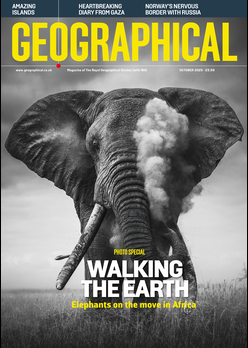
The results of the 2023 UK Butterfly Monitoring Scheme reveal the changing fortunes of some British butterflies
By
After the dark, grey days of winter our gardens, parks, woodlands and fields are starting to come back to life. Alongside the blossoming of spring flowers, one of the first indications of summer being just around the corner is the appearance of the first butterflies.
These floppy-winged insects do more than just add colour to our countryside though. Butterflies have fast lifecycles, and are often very sensitive to local environmental conditions, and this makes them uniquely placed amongst British insects to act as indicators of the state of the environment. What this means is that by monitoring the nations butterfly populations we can also get an overview on the local impacts of climate change.
Every year since 1976, in what is the longest-running survey of its kind, the UK Butterfly Monitoring Scheme (UKBMS), led by Butterfly Conservation, the UK Centre for Ecology and Hydrology (UKCEH), British Trust for Ornithology (BTO) and the Joint Nature Conservation Committee (JNCC), has asked volunteers to conduct weekly transect walks between April and the end of September, recording the butterflies encountered across hundreds of different nationwide sites.
The results of the 2023 survey have just been released and, unfortunately, they paint a sad story for some of our most recognised butterflies. The small tortoiseshell in particular, which was once common in our gardens, has suffered a devastating decline of 82 per cent since the first survey in 1976. Another hard-hit species is the small pearl-bordered fritillary, which has seen its population drop 71 per cent over the same period of time. Of the 58 species recorded, half suffered from a lower-than-average population in 2023. According to the report, the cryptic wood white, grizzled skipper, pearl-bordered fritillary, grayling and scotch argus all faced significant difficulties in 2023, while the green-veined white and ringlet both had a poor year, although it’s believed that this is more of a short term blip due to ongoing effects from the 2022 drought.



Regarding butterfly species recording a lower-than-average population, Dr Richard Fox, Head of Science at Butterfly Conservation, said, ‘Butterfly numbers fluctuate naturally from year to year, largely due to the weather, but the long-term trends of UK butterflies are mainly driven by human activity, including habitat damage and destruction, pesticide use, pollution and climate change. By monitoring long-term butterfly trends, we can learn about the impact of climate change and other factors on our native wildlife.’
It wasn’t all bad news, though, as half the recorded species had a better-than-average 2023. The large blue, which was declared extinct in the UK in 1979 but then re-introduced in the mid-1980s, had its most successful year yet. Other butterfly species that flourished included the red admiral, which is a migratory species that has begun to overwinter in the UK as the climate has warmed and has seen its population increase by 318 per cent at monitored sites since 1976. The chequered skipper and the brimstone both also recorded their best years since the survey began, while populations of the brown argus, marbled white, comma, black hairstreak, and holly blue all did unusually well.
Summing up why surveys such as this are important, Chris Tuckett, Chief Officer for Strategy and Impact at JNCC, said: ‘The evidence produced through environmental monitoring, such as the UK Butterfly Monitoring Scheme, demonstrates the vital role these schemes play in helping us understand the effects of pressures on the natural environment and, equally importantly, how efforts to address these pressures through nature conservation and recovery can be effective in reversing decline.’
Related articles:




